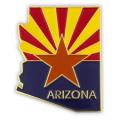
Visit our community sponsor

Thanks:
0

Likes:
0
-
 Administrator
Administrator

Bigger rims, shorter sidewall: Change the alignment?
Consumer car application...
If I go from a 18' inch rim to a 20" is there any reason why I would need to do a re-alignment? My friend asked and I think he may be getting soaked because I see no reason for one.
Thoughts?

FFR 5369 Pin Drive, IRS, Trigos, Torsen, Wilwoods, FMS BOSS 302 "B" cam , Mass-flo. CA SB100 (SPCN) Registered
Delivered 4/23/06. "Finished" 4/2012 (still not done!)
-
In my opinion it all depends on the circumstances surrounding the change. were the old tires worn out? then yeah an alignment is probably good preventative maintenance just to make sure everything is in check. depending on the car, it may have been 35,000+ miles since the last set of tires were replaced and every few years it's a good idea to check alignment. just think of all the potholes that were hit over the past X years.
in all reality, no. unless they are noticing unusual tire wear patterns or an increased wear rate the alignment is fine and the suspension geomotery is not at all affected by tire/wheel size. but $150 for an alignment is a LOT cheaper than blowing through a set of tires 4x faster than you should.
-
Not a waxer

A rim change will not change the caster, camber or toe.
Jeff
-
 Administrator
Administrator


Originally Posted by
Jeff Kleiner

A rim change will not change the caster, camber or toe.
Jeff
That's what I knew, but was asked to confirm. Thanks.
FFR 5369 Pin Drive, IRS, Trigos, Torsen, Wilwoods, FMS BOSS 302 "B" cam , Mass-flo. CA SB100 (SPCN) Registered
Delivered 4/23/06. "Finished" 4/2012 (still not done!)
-
As captain o'ring stated .....short answer is ... No😊

Originally Posted by
David Hodgkins

Consumer car application...
If I go from a 18' inch rim to a 20" is there any reason why I would need to do a re-alignment? My friend asked and I think he may be getting soaked because I see no reason for one.
Thoughts?

-
Wouldn't it depend on the tire? I assume you're assuming that the overall diameter of the tire doesn't change. (A double assumption! We're all doomed!!!!)
At what point does the slight variation in overall diameter (going from a R18 to a R20 with a different ratio) have such an effect that would require a re-alignment?
Just curious.
-
Seasoned Citizen

When talking front end "alignment" we typically limit this to caster, camber, and toe settings. Since caster & camber are measured in degrees these won't change. However, depending on where you take your toe readings you may end up with a different dimension as we generally use inches or millimeters as dimensional values. If taking the readings from the tread portion of the tire and the tire diameters are different you will get a different dimension. If we measured toe in degrees you would see no change. Of course if you change tire diameters on only one end of the car (front or back) you could see some caster change but it would have to be a very short wheelbase car and a very large change in tire diameter to make any real difference.
-
-
Seasoned Citizen

To help visualize the change let's take a 90" WB roadster with 255/50R16 (26" diameter) tires on the back. You want to replace just the rears with some awesome looking Hoosier DOT drag radials that are 29" tall. That's a rather big change in tire diameter for a sports car but maybe you can make it fit. You will affect your caster by one degree. Many cars out there have a caster spec that allows for a greater than 1-degree variance and most drivers that drive only on the street won't feel it in the steering wheel. However, if you're a serious track star you might feel less steering effort and maybe a slight impact to directional stability on the straights at Daytona when reducing 1-degree of positive caster. For most folks the bigger problem is now your speedometer reads much slower -- that's why everyone else on the road seems to be holding you up.
-
Not a waxer


Originally Posted by
NAZ

To help visualize the change let's take a 90" WB roadster with 255/50R16 (26" diameter) tires on the back. You want to replace just the rears with some awesome looking Hoosier DOT drag radials that are 29" tall. That's a rather big change in tire diameter for a sports car but maybe you can make it fit. You will affect your caster by one degree...
No, because you have not changed the geometric relationship between the upper and lower pivot points (ball joints) and spindle. If that were the case to change caster you'd adjust rear ride height---it don't work thataway 
Jeff
-
Seasoned Citizen

Caster is the same as king pin offset on an old solid axle truck for us grey haired guys. Draw an imaginary line through the upper and lower ball joints and that's your caster. It is a angle referenced to a level surface or in other words, the shop floor. The easiest way to visualize this is the forks on a motorcycle. Notice they are at an angle to the "shop floor". When you increase the diameter of the tire on one end of the car (or motorcycle) you change the relative angle of the chassis in relation to the shop floor. The front suspension is fixed to the chassis so if you change the angle or "rake" of the chassis the suspension components follow. Therefore, the caster changes. You can simulate this by simply jacking up the front or rear of the car. Visualize that motorcycle fork again and think about how that angle (caster) changes when you lift the front wheel off the ground. Changing the "rake" of a car most definitely changes the caster as caster is an angular relationship to a level plane. Don't believe it, try setting caster when the car is on a sloped driveway.
Last edited by NAZ; 09-24-2016 at 08:59 PM.
-
Senior Member

Interesting conversation, but is the car getting its rear wheels changed or all 4?
 Posting Permissions
Posting Permissions
- You may not post new threads
- You may not post replies
- You may not post attachments
- You may not edit your posts
-
Forum Rules

Visit our community sponsor





 Thanks:
Thanks:  Likes:
Likes: 


 Reply With Quote
Reply With Quote




